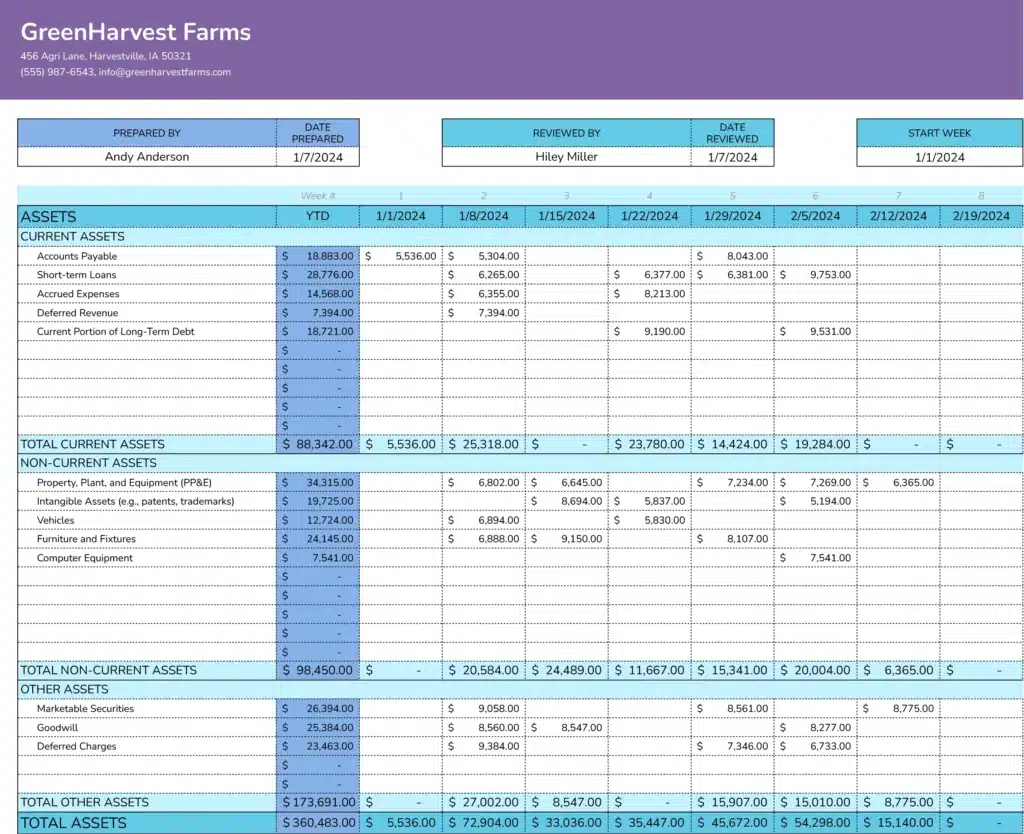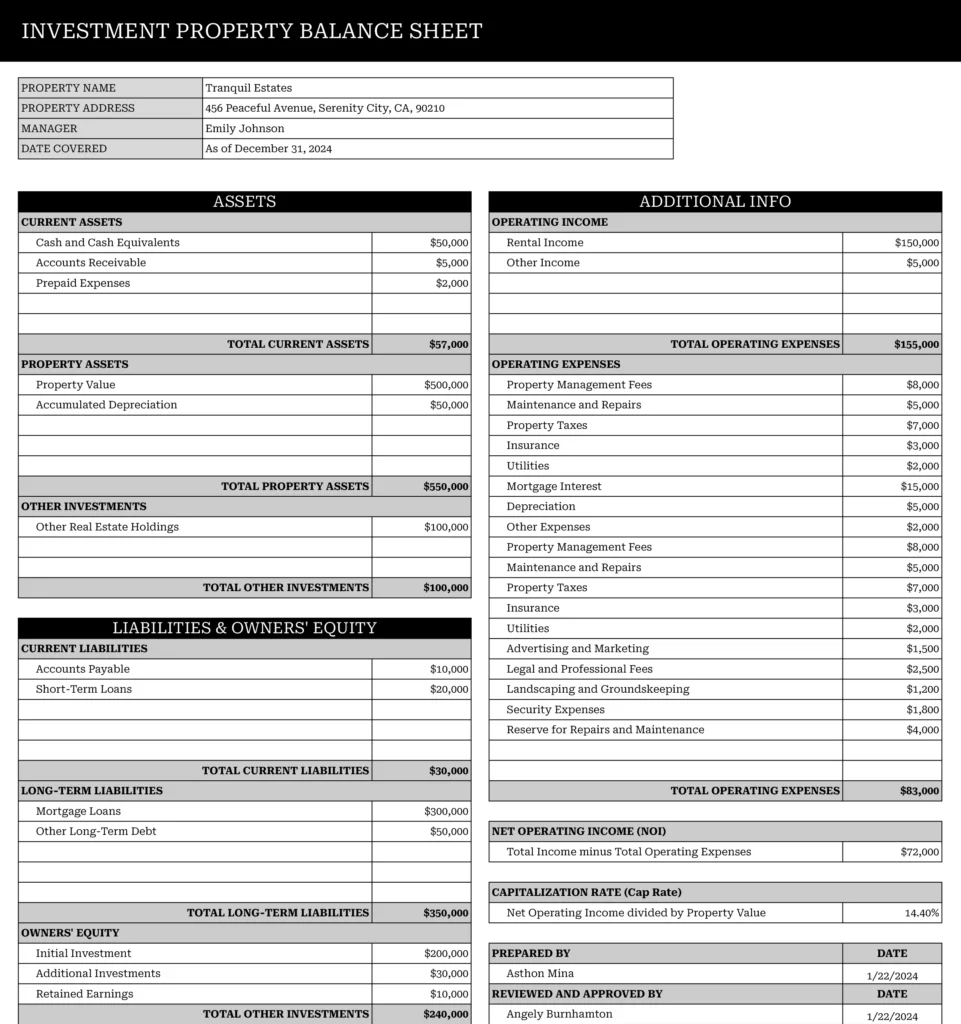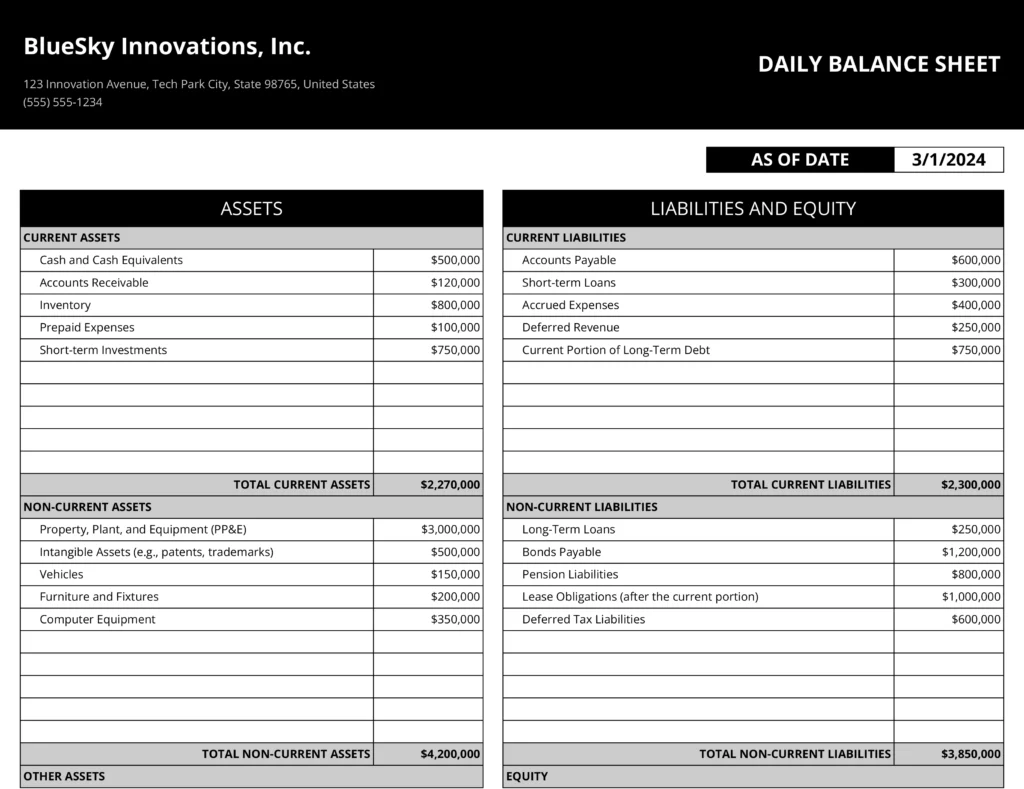Are you struggling to keep track of your financial position each month? A well-structured monthly balance sheet template can be your lifesaver. In this guide, we delve into the nuances of creating and maintaining an effective monthly balance sheet, tailored to suit both personal and business needs.
Understanding the Monthly Balance Sheet
A balance sheet is a financial statement summarizing your assets, liabilities, and equity at a specific point in time. It’s crucial for assessing financial health and making informed decisions.
How Do You Make a Monthly Balance Sheet?
Creating a monthly balance sheet involves:
- Listing all assets (cash, inventory, receivables).
- Summarizing liabilities (loans, accounts payable).
- Calculating equity (assets minus liabilities).
Crafting Your Balance Sheet
A step-by-step guide ensures precision in your financial documentation.
Maintaining in Excel
Excel is a versatile tool for balance sheet maintenance. Here’s how:
- Use templates for automatic calculations.
- Regularly update data for accuracy.
Projecting Your Balance Sheet
Projecting your balance sheet involves:
- Estimating future assets and liabilities.
- Analyzing trends to make projections.
Advanced Insights and Optimization
Understanding the deeper aspects of a balance sheet is key to financial mastery.
Calculating the Balance Sheet
Key calculations include:
- Asset valuation.
- Liability estimation.
Insights from Top Landing Pages
- Types of Balance Sheets: Tailor your sheet to reflect monthly, quarterly, or annual data.
- Financial Analysis: Use your balance sheet for effective financial planning and analysis.
Customization and Utility
The beauty of a balance sheet lies in its adaptability and integration capabilities.
Template Customization
Customize templates to fit specific business needs, ensuring relevance and functionality.
Integration with Financial Tools
Link your balance sheet with other financial tools for a comprehensive view of your financial status.
A monthly balance sheet template is more than a document; it’s a roadmap to financial clarity. By following this guide, you can create a tool that not only tracks your financial status but also aids in strategic decision-making.









